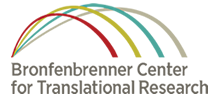 This year, I have a child in first grade and another in preschool. As I become more entrenched in school life every year, I have more and more questions about whether our schools are using evidence in making decisions and developing policies.
This year, I have a child in first grade and another in preschool. As I become more entrenched in school life every year, I have more and more questions about whether our schools are using evidence in making decisions and developing policies.
In some of my research, I came across the United Kingdom-based Education Endowment Foundation. This non-profit funds programs that help lower-income students excel in school, but it also encourages schools and governments to use evidence-based programming and policies.
The foundation has a great toolkit for educators that uses systematic reviews to rate educational topics and interventions. To date, the toolkit summarizes the evidence on 34 different educational topics. For parents, teachers and educational leaders, these summaries are a gold mine that can guide discussions and inform the decision-making process.
Here are a few of the evidence summaries I found interesting:
- Reducing class size: Small reductions in class size – for example from 30 to 25 students per class – are unlikely to yield any benefit because they do not allow teachers to teach differently. Reducing class sizes for younger children below 20 kids per class does provide some long-term benefits. Another solution is to hire teaching assistants so that teachers can work more intensively with small groups.
- Repeating a year: “Evidence suggests that in the majority of cases repeating a year is harmful to a student’s chances of academic success. In addition, studies consistently show greater negative effects for students from disadvantaged backgrounds who repeat a year, suggesting that the practice of repeating a year is likely to increase educational inequality.”
- Phonics: The evidence shows using phonics is “consistently effective in supporting younger readers to master the basics of reading.”
- Digital technology: “Overall, studies consistently find that digital technology is associated with moderate learning gains. However, there is considerable variation in impact. Evidence suggests that technology should be used to supplement other teaching, rather than replace more traditional approaches.”
Is there an educational policy or strategy that you’re wondering about? The Education Endowment Foundation’s toolkit is literally a treasure trove of data on the best ways to help children learn.



Speak Your Mind